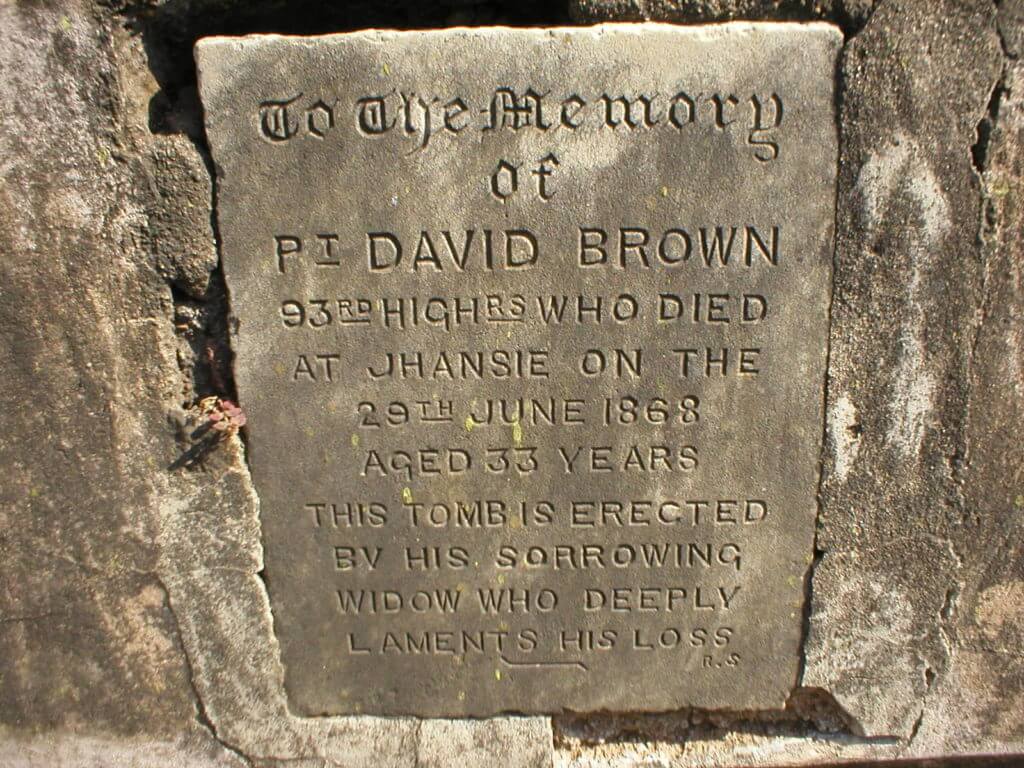There are a huge number of cemeteries in India bearing witness to the widespread settlement of the British whether civilian or military, permanent or temporary.
Despite being a comparatively small city, Jhansi has some particular considerations in that it was a military base or cantonment, and was also an important railway junction with one of the longest platforms in the world and with large railway engineering works.
It is believed that Jhansi was the inspiration for the 1954 novel ‘Bhowani Junction’ by John Masters, which became a motion picture in 1956.
Since the Indian Mutiny and the heroic actions of the ‘Rani of Jhansi’ there has been a considerable presence of both Indian and British Regiments, and in the Second World War Jhansi became the headquarters of ‘The Chindits’ , the special forces group that trained around Jhansi and fought behind enemy lines in Burma.
Today Jhansi Cantonment Cemetery lies outside the main city centre and the research that has been completed was inspired by a local lady, Mrs Peggy Cantem, who in her mid 80’s decided that something should be done about the cemetery which had suffered decades of neglect. This project was in progress around 2005 with funds pledged from all over the world and, of course, from BACSA. This work did not include any actual grave preservations, it was targeted at the removal of vegetation and repairs to walls and buildings.
Mr Chris Davey, a British engineer working in the vicinity, supported Peggy in this venture and committed his office staff to help with the collection of data from burial registers and from grave inscriptions. Anyone who has done such a task will appreciate that this was a significant task made harder because of the lack of specialist skill in the individuals involved in understanding the nuances of such records and even deciphering handwriting, names, abbreviations, medical terms etc.
In most cases cemetery books are compiled by the person who researched the data but this was not possible in the case of Jhansi. Once in BACSA’s hands, and with a suitable volunteer engaged, the data was massaged and re-worked, compared and adjusted with British Library & CWGC records, medical dictionaries deployed to help validate the descriptions of cause of death and most importantly the data was painstakingly compared with gravestone inscription images.
An electronic data conversion completed the task with a format transfer from database to something more suitable for the written word. The result is an easy to read, structured and comprehensive, fully indexed directory of over 2,900 individuals interred at Jhansi Cantonment Cemetery prior to Indian Independence in 1947.
There are a number of CWGC graves which fell under their preservation and maintenance considerations and in 2016 a number of decayed graves were restored and in some cases the original headstone was replaced by the new CWGC ‘ standard’ format headstone. This means that the original inscription, the sentiments and commemorations by comrades, has now been removed, but not lost forever as those inscriptions are, in fact, recorded in this publication.
‘Jhansi Cantonment Cemetery’ contains information about military personnel from a huge range of regiments; Indian, Scottish, Welsh, English even West African. It has army wives, children and babies, railway workers and their families, even Boer prisoners of war and those who lost their lives in an Air France Air crash in 1938.
Ancestry researchers, military aficionados, even epidemiology researchers will find this publication of huge interest.
Purchase Jhansi Cantonment Cemetery Record Book


Author: Martin Smith
